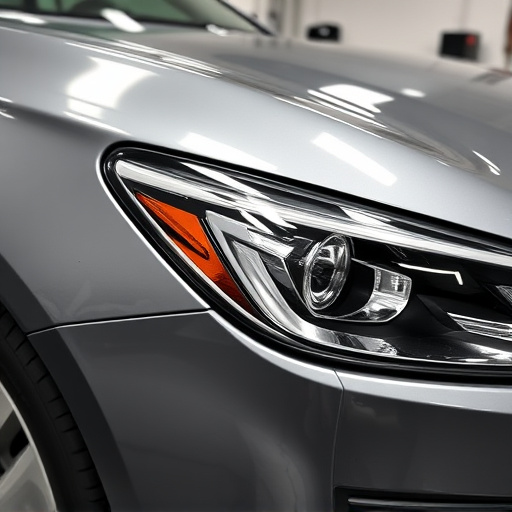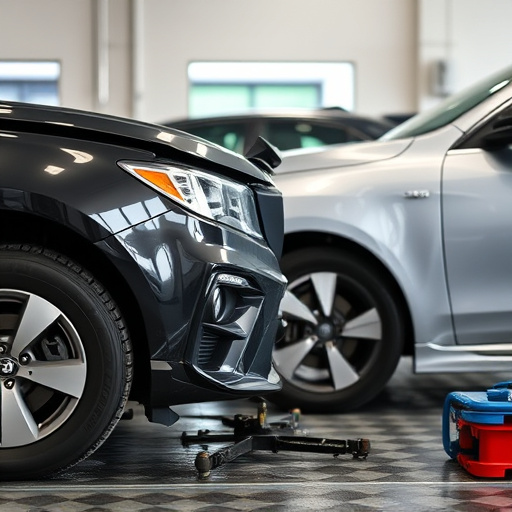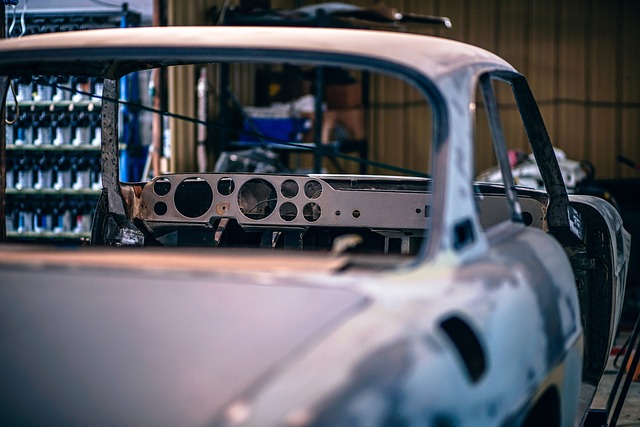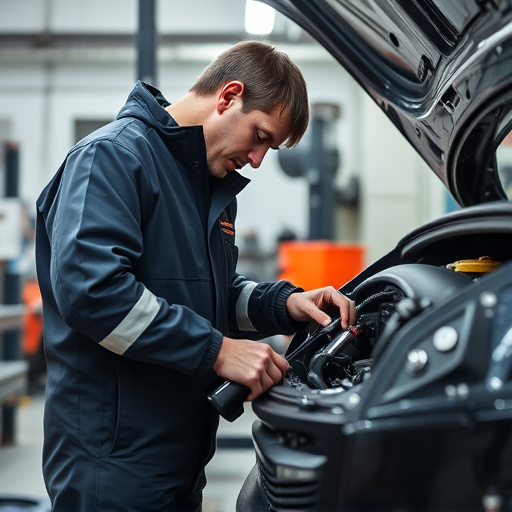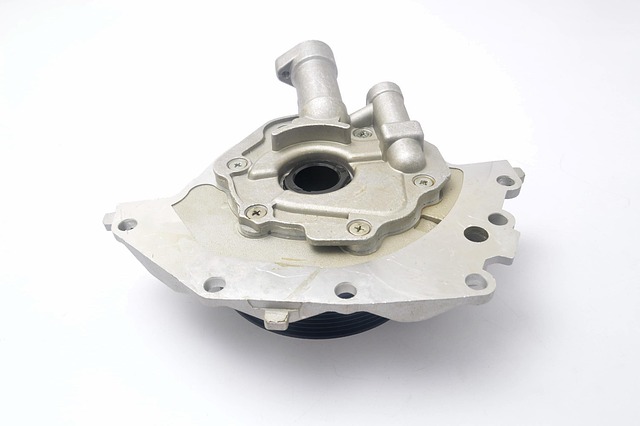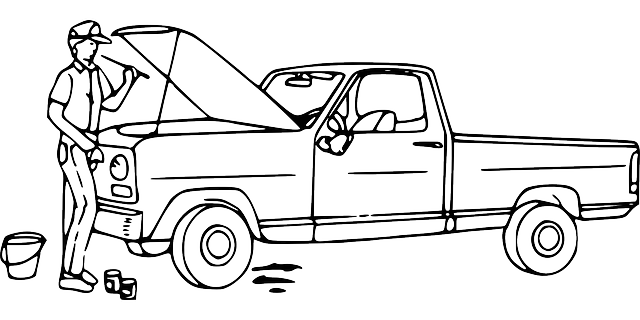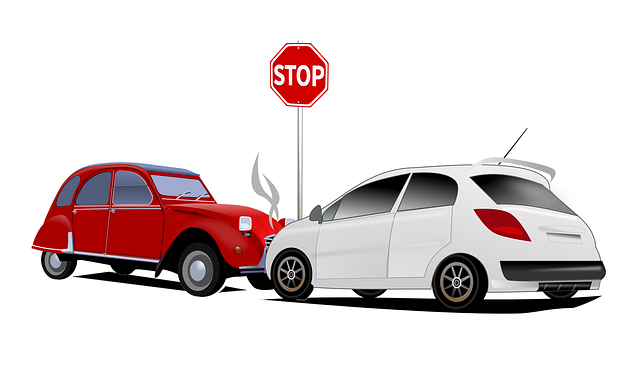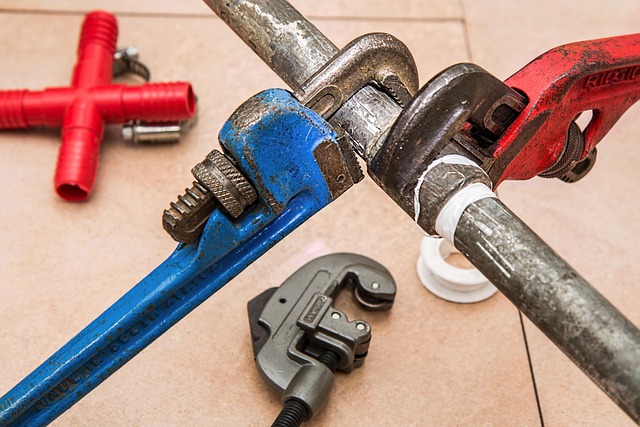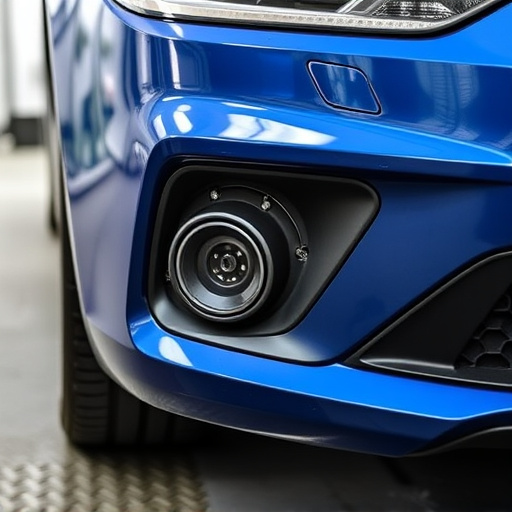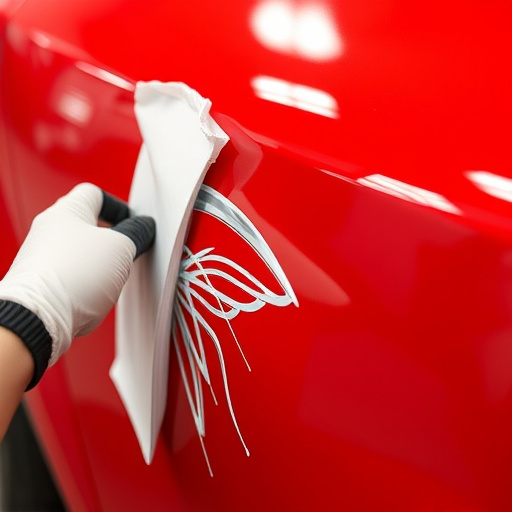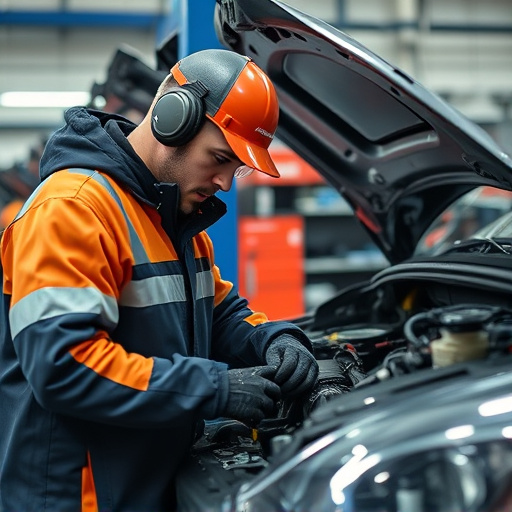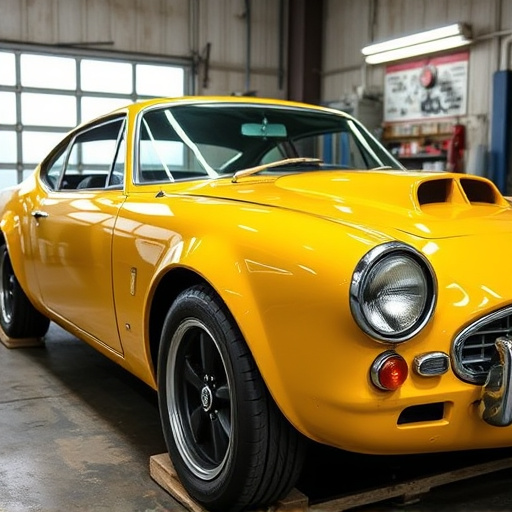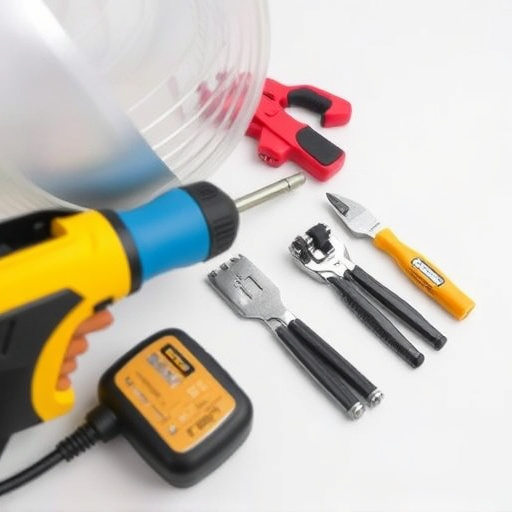Manufacturer-approved repairs are crucial for vehicle restoration, ensuring safety, quality, and aesthetic integrity through precise techniques for paintwork, sensor adjustments, and calibration. This process involves thorough inspections, using genuine parts, and adhering to strict guidelines using specialized equipment. The benefits include enhanced reliability, improved resale value, customer satisfaction, and a reputation for excellence, despite the initial investment in training and tools.
In the automotive industry, maintaining precision is key. Manufacturers now offer approved repair solutions for paint, sensors, and calibration, ensuring restoration without compromising integrity. This guide explores the standards behind these repairs, providing an in-depth look at the process and its benefits. From understanding specific guidelines to considering implementation strategies, discover why manufacturer-approved repairs are transforming aftercare, boosting efficiency, and enhancing customer satisfaction.
- Understanding Manufacturer-Approved Repair Standards
- The Process of Performing Approved Repairs
- Benefits and Considerations for Implementers
Understanding Manufacturer-Approved Repair Standards
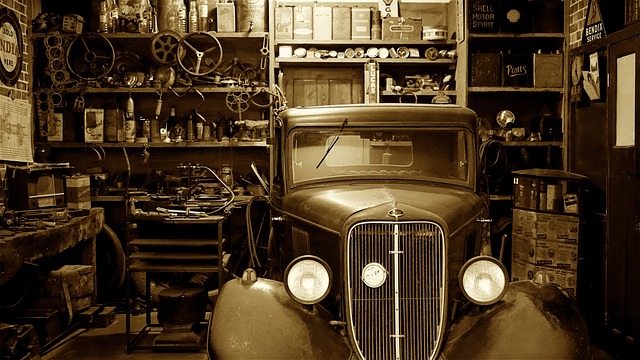
Manufacturer-approved repair standards are crucial for ensuring that vehicles, from their sleek exteriors to intricate sensors, are restored to their optimal condition. These standards act as a beacon guiding auto body restoration and automotive repair processes, guaranteeing both quality and safety. When dealing with paint repairs, sensors, or calibration adjustments, adhering to these guidelines is paramount.
The significance of manufacturer-approved practices lies in their ability to preserve the vehicle’s original performance and aesthetics. Auto repair services that align with these standards employ precise techniques and specialized equipment to restore components like sensors and calibrate systems accurately. This meticulous approach ensures that the auto body restoration process not only addresses visible damage but also aligns with the manufacturer’s specifications, ultimately enhancing the overall reliability and resale value of the vehicle.
The Process of Performing Approved Repairs
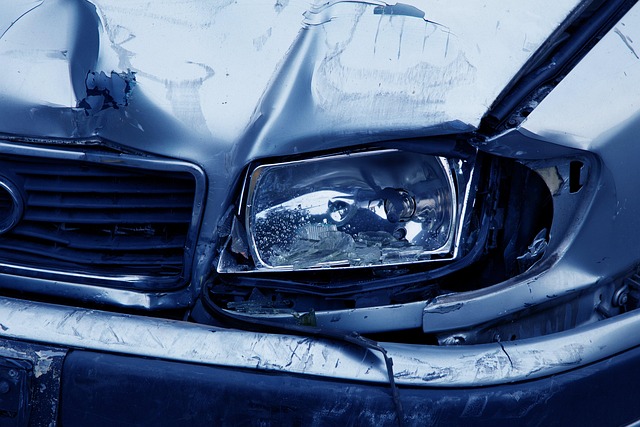
When it comes to manufacturer-approved repairs for paint, sensors, and calibration, the process is meticulously designed to ensure precision and quality. It begins with a thorough inspection of the damaged area, where skilled technicians identify the extent of the issue, be it a minor scratch or significant damage from a collision. This initial step is crucial as it determines the course of action, whether it’s simple paint repair or complex sensor calibration adjustment.
Next, genuine replacement parts approved by the manufacturer are sourced to match the exact specifications of the vehicle. These parts undergo rigorous testing to maintain their integrity and functionality. The repair process then involves either painting the damaged area to match the original finish seamlessly or calibrating sensors using specialized equipment. Skilled technicians adhere to strict guidelines and use industry-standard tools to guarantee that the vehicle is restored to its pre-damage condition, providing reliable performance and safety features through professional auto body restoration techniques.
Benefits and Considerations for Implementers
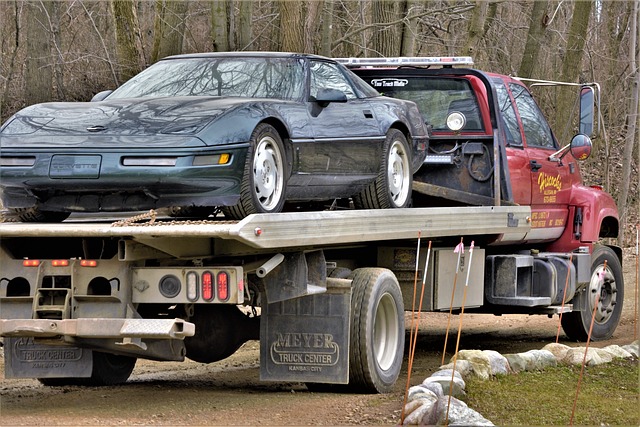
Implementing manufacturer-approved repair processes for paint, sensors, and calibration offers numerous advantages for car dealerships and auto maintenance centers. Firstly, it ensures consistent quality and performance across all repairs, maintaining the vehicle’s original specifications. This standardization is crucial in today’s market where customers demand top-tier workmanship and precision. By adhering to manufacturer guidelines, implementers can boost customer satisfaction and build a reputation for excellence in car bodywork services.
Considerations for businesses adopting these practices include investing in specialized training for staff and acquiring the necessary tools and equipment. While the initial setup may require significant resources, it pays off in the long term by reducing rework and enhancing overall efficiency. Moreover, staying aligned with manufacturer recommendations ensures that repairs are covered under warranties, protecting both the business and its clients from potential disputes. This attention to detail is a game-changer for car body restoration, ensuring vehicles return to their optimal condition while meeting stringent safety and performance standards.
Manufacturer-approved repairs are a game-changer in ensuring vehicle reliability and safety. By adhering to these standards, repair shops can offer top-notch services, maintaining the integrity of sensors and calibrations. This process not only benefits implementers with enhanced skills but also guarantees satisfied customers who receive high-quality, guaranteed repairs. Embracing manufacturer-approved practices is a step towards revolutionizing the automotive industry, fostering trust between businesses and consumers alike.
